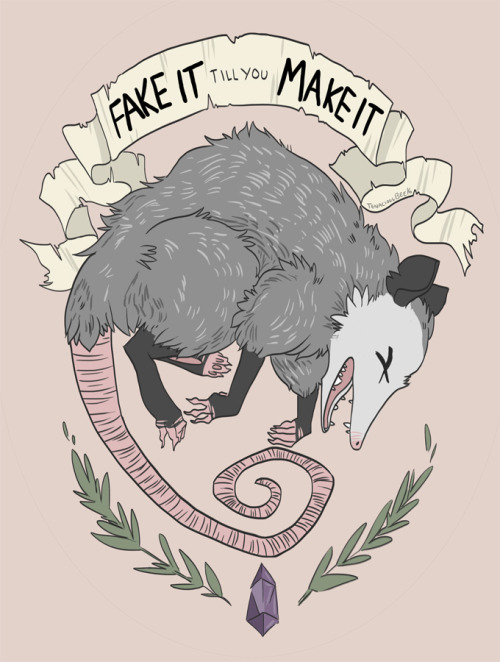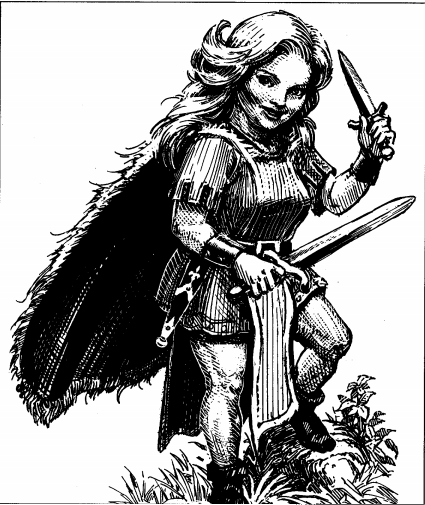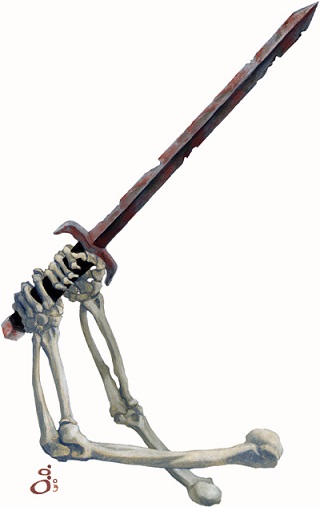Anthony over at Dungeonantology put together a new list of 20 questions to answer about your campaign setting so that players have an idea of what to expect.
I'm answering them for one of my PLOGgy campaigns. Both my campaigns take place in the Forgotten Realms; this is my "Grim's Knights" campaign, which uses heavily houseruled OSE (with a lot of 1e and 2e and FR material packed in), and takes place in northern Cormyr in 1357 DR. (The beginning of the Forgotten Realms as published in the 1e Forgotten Realms Campaign Set.) We're starting with a greatly expanded version of FRQ1 The Haunted Halls of Eveningstar.
Answering these questions then isn't about answering with particularly canon FR answers, because that's kind of boring - it's discussing how I'm portraying the Realms in this particular campaign, how the players are interacting with the setting, and how that is its own unique trash. I'm tagging some of these with the appropriate sources, in case people want to do more research; but I'm showing this to my players, so I'm not telling all the exact details.
1. What is something that players can interact with that inspires wonder in your setting?
I think the most wondrous thing the players have encountered themselves yet is when they tried to smoke out the Caverns of the Claws last session, to force out the trolls dwelling there. The wind was in their favour, and the black thick smoke filled the cavern. The trolls did rush out, terrified, burning to death in the firewall at the entrance. But something huge inside came out too, with eye tentacles and claw tentacles twenty feet long each, and it smashed apart the firewall and broke open the smoke with little trouble, knocking down Dansk and almost slaying him. It thankfully took Nym's owlbear leg as an offering and retreated back into the depths of the cave. Now the players know that things ancient and magical lurk in surprising places.
(Said monster IS right out of the Forgotten Realms setting-specific monster books, but I'm not telling. Yet.)
2. How does one religion in the world work? What rituals and observances are involved, and how does this religion play with other religions out there? Are gods real?
The gods of the Realms are definitely real, and the ones in Northern Cormyr are all part of a single loose pantheon. Eveningstar has only one temple, the House of the Morning, dedicated to the sun god Lathander; but they accept many other faiths. In the Realms, people choose a single patron deity to devote themselves to, but often offer prayers, sacrifices, or work to placate other deities. The PCs returned a dead hireling to the sanctified graveyard at the House of the Morning, and offered simple prayers to her patron deity, Tempus. Randal whispered his own private prayer to his goddess, Chauntea, at the gravesite, and Chauntea showed her favour with a flower blooming on the hireling's grave. Other such manifestations have been visible.
(Basically all the FR campaign setting books/Faiths and Avatars.)
3. How does one get access to goods and services in the setting? Items, magic items, hirelings.
Eveningstar makes good trade selling to adventurers, so standard goods are very much available for sale in the shops of the town. (One of the shopkeepers is a dick who takes glee in humiliating the adventurers who come to buy from him, but he still sells to them.) Magic items are not generally available for sale, although the House of the Morning sells limited amounts of potions of healing for exorbitant prices. (Again, profiting off adventurers.) Hirelings are common, with plenty of people coming to prove their mettle in the Haunted Halls.
(FRQ1 Haunted Halls of Eveningstar, Volo's Guide to Cormyr)
4. What are some examples of people and creatures a commoner would be wary of in-setting? What are some examples of people and creatures a commoner could trounce without worry? What are some examples of people and creatures a commoner would trust?
Unusually for the Forgotten Realms, Cormyr is generally a strong, stable kingdom. Commoners generally trust their noble, good King Azoun IV, his military (known as the Purple Dragons), the various government officials, and the War Wizards, the national force of magic-users under Royal Magician Vangerdahast.
Eveningstar's position just below the Stonelands means goblin, kobold, and orc raids are not unheard of. Commoners would be wary of monstrous humanoids or significant bestial monsters (worgs, owlbears), and likely try to call on the local Purple Dragon detachment for help.
The most common creature a commoner in Eveningstar would trounce is a tressym, the winged flying elven cats. For some reason, a large semi-feral colony of them exists in Eveningstar.
(Revised Forgotten Realms Campaign Setting, Volo's Guide to Cormyr)
5. Name a heroically slain dragon, or something comparable in threat. How was the creature slain, according to stories? How was it actually done? Was it a fluke or a well-executed slaying of a monster?
The most recent dragons slain were a year past, when a Flight of near a hundred dragons boiled forth from the Cold Lands to the north and east, destroying much of the cities before them. Lady Lord Myrmeen Lhal proved herself an able ruler when one such dragon attacked Arabel in northern Cormyr. Under her coordination, Arabel's large garrison of Purple Dragons took the dragons down with catapults and archery, the creature crashing to the east. Purple Dragons are not generally outfitted to fight dragons (Arabel is garrisoned against humanoids, such as orc bands or rebels), but with the assistance of the War Wizards, they succeeded.
(Forgotten Realms Campaign Set, Forgotten Realms Adventures)
6. How do people who adventure (if there are even such people) get jobs and contracts in this setting?
Adventurers in Cormyr require an official adventuring charter from the Crown in order to adventure legally. Chartered adventurers may take jobs or contracts from anyone, as long as such actions do not injure or damage Cormyr, its government, or its people.
(Volo's Guide to Cormyr)
7. How do people convey their station/caste if such things exist? In particular, what intersections do station/caste have with the adventuring lifestyle (whatever the players are in the setting...guards, tomb raiders, bounty hunters, etc.)?
Clothing and privilege matter a fair amount in Cormyr, which has significant noble and merchant classes. Nobles have rights that members of lower classes do not (for example, they can stop their carriages in the middle of busy streets, impeding traffic), wear their own protected heraldry, and so on. Members of all classes adventure in Cormyr, although it is not generally thought of as a wise or socially acceptable profession; third-or-so in line noble children may adventure for lack of anything better to do to prove themselves.
(Elminster's Forgotten Realms, Revised Forgotten Realms Campaign Setting)
8. What privileges and prejudices exist in your world, if any do at all? For example: How does the world view LGBTQ identities, ethnic identities within each fantasy “race”, and race relations?
In general, Cormyr's cities are quite tolerant, while prejudicial, close-minded views are more common in smaller communities. A prominent rumour in much of Cormyr's villages is that the odd "lass-lovers" flock to each other in some sort of commune out towards the Stonelands; in reality, many queer people find happy, accepting lives in Arabel, Suzail, and the other cities.
Nation of origin can be met with some skepticism; the neighbouring country of Sembia is often regarded with disdain, as its "gold-first, scheme at all costs" views are often thought of as misguided and something to be avoided.
People of other ethnicities are sometimes exoticized, such as the Mulhorandi and the Turmish far to the south and east across the Sea of Fallen Stars.
Elves, dwarves, halflings, and gnomes are accepted in Cormyr; orcs and goblins are not. Half-orcs are met with suspicion.
(Swords of Eveningstar, Forgotten Realms Campaign Set)
9. What is the distal view of the political system? Is it feudal, is there a suzerainty, do we have a triumvirate, etc.
Cormyr is a hereditary monarchy, with House Obarskyr the continual ruling house since the country's founding, when Ondeth Obarskyr claimed the right to settle the Forest Kingdom's lands from the elf-lords who held dominion over it. Succession goes to the first-born first, regardless of gender (currently this is Crown Princess Tanalasta), as long as they have an accepted claim to the throne. (Bastard children have been an issue in the past; regents ruling on behalf of underaged rulers is not unheard of.)
Other noble houses exist, with their nobility granted for service to the Dragon Throne; intermarriage with House Obarskyr has strengthened many of their ties, especially among the so-called "royal houses."
(Revised Forgotten Realms Campaign Setting, Grand History of the Realms, Swords of Eveningstar.)
10. What is a more proximal view of the political system? Who are local nobles or leaders that should be known about, and what are their reputations?
Eveningstar is well-lead by Lady Lord Tessaril Winter. Her assistants are the local Herald Tzin Tzummer (responsible for all naming legalities, taxes, births and deaths) and the town clerk Aldo Morim. Tessaril was appointed by Azoun IV; she is thought to be fair but stern, and works to keep Eveningstar safe from its many dangers.
Lady Lord Myrmeen Lhal's hold on Arabel is more tenuous. The city has a reputation for past rebellion, epitomized by the month-long reign of Gondegal, the Lost King, who rose up to take Arabel and could only hold it by force. When Azoun IV and his men retook Arabel, Gondegal had escaped, presumably to the north and east. Rumours hold that he plots to regain his kingdom once again, some six years later.
(FRQ1 Haunted Halls of Eveningstar, Revised Forgotten Realms Campaign Setting, Forgotten Realms Campaign Set)
11. Do your players even need their rations and torches?
Yes. Torch longevity has mattered for trips into the Haunted Halls, and rations will become more meaningful as the party travels farther beyond the comfort of Eveningstar's inns.
12. How do you become a ruler of many?
Thumbing your nose at the Crown, as Gondegal did, would make you a ruler of many - until your sword arm tires, and you cannot hold the lands you've stolen.
Better to prove yourself to the Crown and receive title to some land or position. In particular, King Azoun IV has promised a title to experienced adventurers who can clear and hold territory in the Stonelands to the north of Cormyr.
(Forgotten Realms Campaign Set, Revised Forgotten Realms Campaign Setting.)
13. Are there social consequences for necromancy or other forms of forbidden magic? Do these consequences differ in the view of the common man vs. other people?
Necromancers are associated with Myrkul, the god of death, and are quite feared. The common man fears the necromancer, but fears Myrkul's wrath more: the god of death and his priests sometimes cross the land, raising those dead in unsanctified ground and sending the newly risen to attack nearby settlements. A commoner is likely to offer tribute to a necromancer and plead mercy.
The War Wizards, in contrast, will expend great effort to find that necromancer and shackle him, exile him, or slay him. Magic-users who are not registered with the Royal Magician, and evil magic-users at that, are great concerns.
(Cormyr, Revised Forgotten Realms Campaign Setting)
14. What is the common man's capability to distinguish the following things: a werewolf's tracks vs. wolf tracks, a manticore attack vs. a lion attack, a demon attack vs. a gargoyle attack?
A common man might be able to separate out common animal tracks (the wolf and the lion) from those of monsters, but no more. They could certainly not distinguish between various kinds of monsters.
(Elminster's Ecologies: The Settled Lands)
15. What is the social position of rogues?
Rogues and thieves are distrusted, watched carefully by city watches and the Purple Dragons, and generally thought of as unsavory. Thieves' guilds do exist in Cormyr, but they are often at odds with the Crown. In contrast, rogues signed to adventuring charters ("the honest trade") are slightly more trustworthy, as the charter means others vouch for their conduct - and can be brought to justice should the rogue commit some crime.
(Forgotten Realms Campaign Set)
16. What is the role of dungeons within the world?
Dungeons are structures built or found by secretive groups or populations, to live or perform secret aims away from common view. Notably, dungeons are almost never empty or unoccupied for long - a dungeon has frequently passed through several occupants, all of whom have left their own legacies and impacts in the place. The Haunted Halls were originally created by dwarves for the bandit lord Rivior; they are rumoured to have other secret occupants to this day.
(Forgotten Realms Campaign Setting)
17. How common are dungeons, how deep or large are they, and how much treasure might be expected within their depths?
Dungeons and ruins are extremely common; settlements are frequently rebuilt atop the ruins of previous settlements due to geographic features. Dungeons can be very deep or large, often linking to the great Underdark below in their darkest reaches. The presence and value of treasure frequently depends upon how accessible and dangerous the dungeon is; adventuring groups frequently clear out shallow ruins, only for them to be repopulated by humanoid races in need of shelter, used for some wizard's experiments, or similar.
(Forgotten Realms Campaign Setting)
18. Explain, if you could, the differences between magic-users in the world. For instance, how would wizards, sorcerers, miracle-workers, warlocks, witches, medicine-men, stage magicians, and the like differ from each other? Do all of those categories even exist?
Those who have true magical power are called wizards, sorcerers, warlocks, thaumaturgists or similar, and all draw force from the Weave which connects all things, shaping it to create their will in the world. Illusionists are their most prominent subgroup, a secret society sworn to the goddess Leira. Other even more unusual, rare types are rumoured, but not confirmed.
Witches are rare, powerful, and worship forbidden gods unknown to humanity.
Hedge witches, frequently women who practice herbalism and act as midwives, do exist, but hold no specific magical power in general.
Charlatans, pretenders, and stage magicians are frequent performers.
(Forgotten Realms Campaign Set, Elminster's Forgotten Realms, Dragon #54: Down To Earth Divinity)
19. What are two examples of food culture in the world? Even if food isn't a part of play, what dishes are people consuming in the world around the players, and what messages can be conveyed through food and drink?
Coffee (kaeth) is slowly spreading throughout Cormyr as a new and trendy drink, its beans grown in far-off Durpar, branded as "Thondur's." It hasn't replaced the herbal, grass, or local teas commonly drunk, is very expensive, and is usually served in tankards, hot and unadulterated.
Ciders, hard and soft, are commonly drunk in Eveningstar; the town and much of Cormyr are in prime apple-growing climates. The presence of the Starwater River gives Eveningstar good local fishing, such as bass and eels; the local farmers sell sheep, goats, long-horned beef cattle known as sharrada, and poultry.
(Elminster's Forgotten Realms, Volo's Guide to Cormyr)
20. What is the internal logic of the game world you are running, as far as players are concerned? When the players act and the world reacts, what principles do you hold to?
The world is internally logical and exists beyond the players, with struggles between powers known and unknown. The world does not wait for the players, and events may occur beyond their reach. The world reacts to the PCs according to the aims and powers of the other factions; it is up to the players to decide what they can handle and how they will deal with the consequences. Fatal consequences are dealt squarely and honestly, but may occur for initially unknown reasons.





